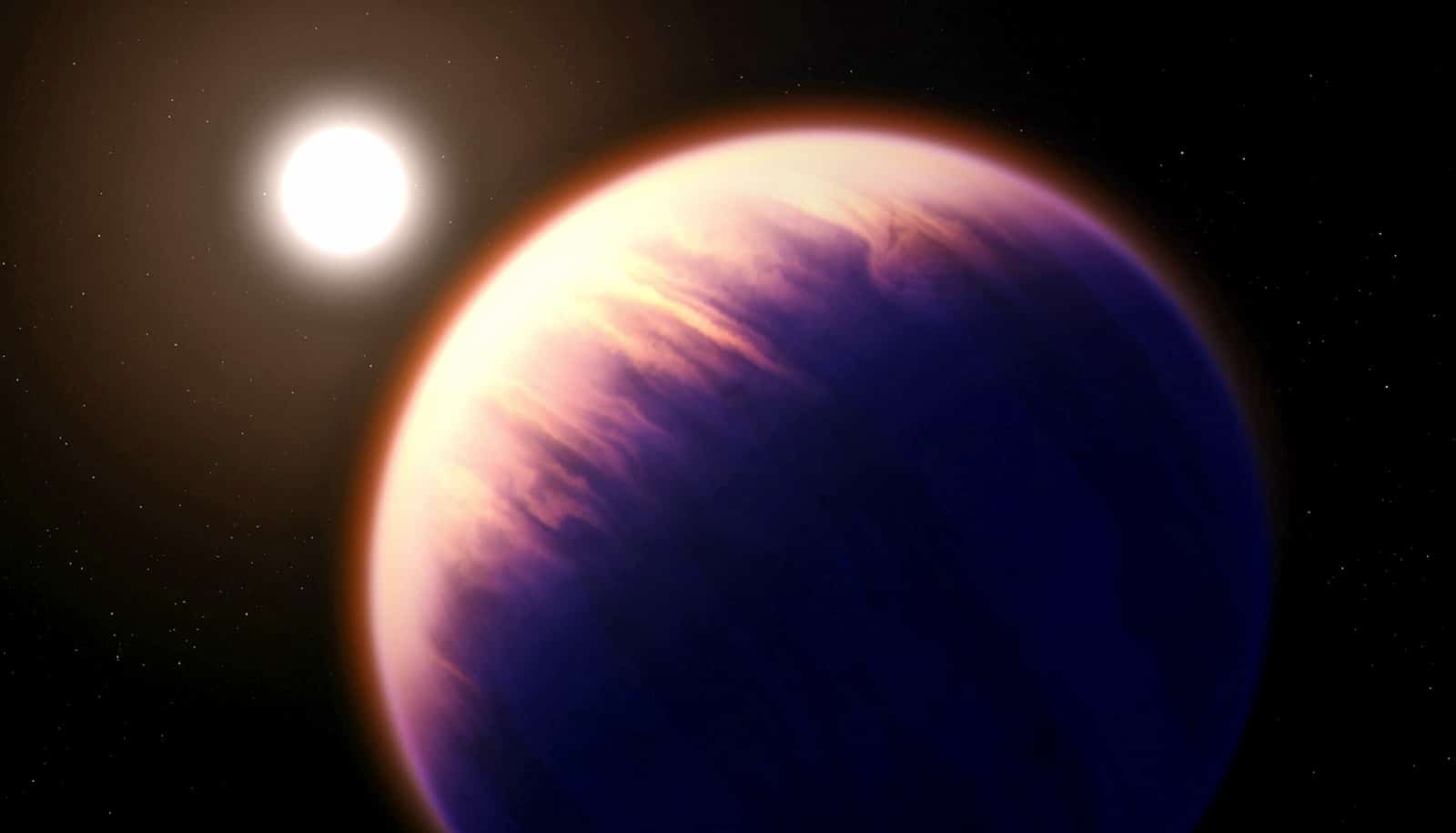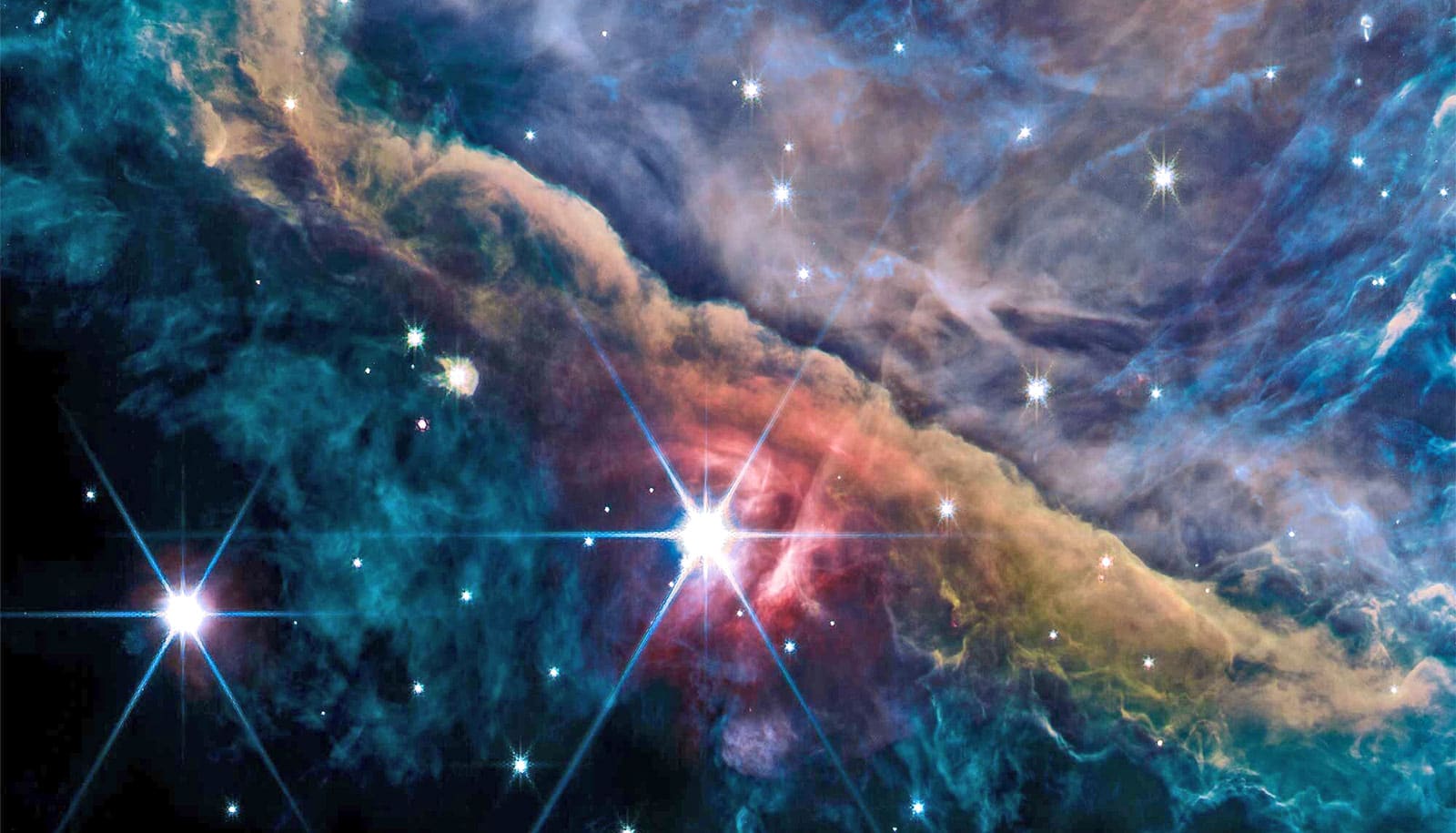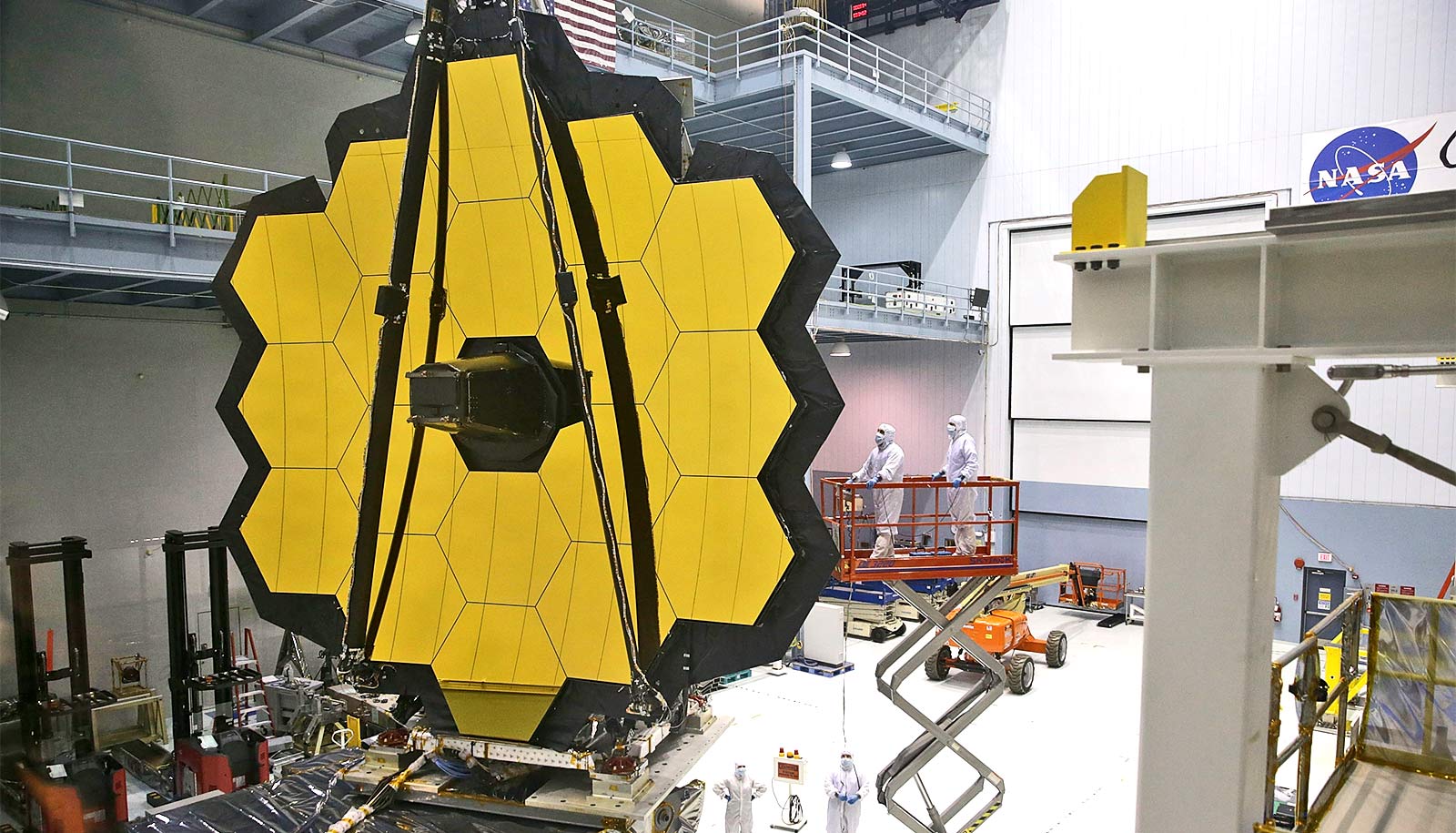NASA’s James Webb Space Telescope has scored another first in its release of stunning images: a molecular and chemical portrait of a distant world’s skies.
The telescope’s array of highly sensitive instruments was trained on the atmosphere of a “hot Saturn,” a planet about as massive as Saturn orbiting a star some 700 light-years away, known as WASP-39 b.
While JWST and other space telescopes, including Hubble and Spitzer, previously have revealed isolated ingredients of this broiling planet’s atmosphere, the new readings provide a full menu of atoms, molecules, and even signs of active chemistry and clouds.
The latest data also give a hint of how these clouds might look up close: broken up rather than a single, uniform blanket over the planet.
The findings bode well for the capability of JWST’s instruments to conduct the broad range of investigations of exoplanets—planets around other stars—hoped for by the science community. That includes probing the atmospheres of smaller, rocky planets like those in the TRAPPIST-1 system.
The suite of discoveries is detailed in a set of five new scientific papers set for publication and available on the preprint server Arxiv (one, two, three, four, five).
‘Wow’ moment
Among the unprecedented revelations is the first detection in an exoplanet atmosphere of sulfur dioxide, a molecule produced from chemical reactions triggered by high-energy light from the planet’s parent star. On Earth, the protective ozone layer in the upper atmosphere is created in a similar way.
“We now have the first indisputable evidence that photochemical reactions are occurring in the upper atmospheres of hot giant planets around other stars. The detection of sulfur dioxide was an absolute ‘wow!’ moment, as from the second we saw the first JWST data there was a small ‘bump’ that we didn’t know how to explain,” says Ryan MacDonald, University of Michigan astronomer and coauthor of the paper examining sulfur dioxide in the atmosphere of WASP-39 b.
“But when we observed WASP-39 b multiple times with JWST, this pesky mystery signal just wouldn’t go away. Once we saw it with multiple different instruments, then we knew we had found something real and something special.”
This led to another first: scientists applying computer models of photochemistry to data that requires such higher level physics to be fully explained.
“This is the first time we see concrete evidence of photochemistry—chemical reactions initialized by energetic stellar light—on exoplanets. I see this as a really promising outlook for advancing our understanding of exoplanet atmospheres with JWST,” says Shang-Min Tsai, a researcher at the University of Oxford in the United Kingdom and lead author of the paper explaining the origin of sulfur dioxide in WASP-39 b’s atmosphere.
Searching for life
The resulting improvements in modeling will help build the technological know-how to interpret potential signs of life in the future. At an estimated temperature of 1,600 degrees Fahrenheit (900 degrees Celsius) and an atmosphere made mostly of hydrogen, WASP-39 b is not believed to be habitable. But the new work points the way to finding evidence of potential life on a habitable planet.
The planet’s proximity to its host star—eight times closer than Mercury is to our sun—also makes it a laboratory for studying the effects of radiation from host stars on exoplanets. Better knowledge of the star-planet connection should bring a deeper understanding of how these processes create the diversity of planets observed in the galaxy.
Other atmospheric constituents detected by JWST include sodium, potassium, and water vapor, confirming previous space and ground-based telescope observations as well as finding additional water features at longer wavelengths that haven’t been seen before.
JWST also saw carbon dioxide at higher resolution, providing twice as much data as reported from its previous observations. Meanwhile, carbon monoxide was detected, but obvious signatures of both methane and hydrogen sulfide were absent from the JWST data. If present, these molecules occur at very low levels, a significant finding for scientists making inventories of exoplanet chemistry in order to better understand the formation and development of these distant worlds.
“Since SO2 is an important molecule on rocky planets (and is commonly produced by volcanoes on Earth), learning how to detect it in the atmospheres of giant exoplanets is preparing us to search for this molecule on terrestrial planets—such as lava worlds—in the years to come,” says MacDonald, also a NASA Sagan Fellow in the University of Michigan’s astronomy department.
Capturing such a broad spectrum of WASP-39 b’s atmosphere resulted from an international team numbering in the hundreds independently analyzing data from four of JWST’s finely calibrated instrument modes. They then made detailed inter-comparisons of their findings, yielding yet more scientifically nuanced results. MacDonald participated in the atmospheric modeling of WASP-39 b, independently concluding that the mystery signal was sulfur dioxide. Once he unblinded his results, he saw that they agreed with other researchers on the team.
Beyond human eyes
JWST views the universe in infrared light, on the red end of the light spectrum beyond what human eyes can see; that allows the telescope to pick up chemical fingerprints that can’t be detected in visible light.
To see light from WASP-39 b, JWST tracked the planet as it passed in front of its star, allowing some of the star’s light to filter through the planet’s atmosphere. Different types of chemicals in the atmosphere absorb different colors of the starlight spectrum, so the colors that are missing tell astronomers which molecules are present.
Having such a complete roster of chemical ingredients in an exoplanet atmosphere also gives scientists a glimpse of the abundance of different elements in relation to each other, such as carbon-to-oxygen or potassium-to-oxygen ratios. That, in turn, provides insight into how this planet—and perhaps others—formed out of the disk of gas and dust surrounding the parent star in its younger years.
WASP-39 b’s chemical inventory suggests a history of smashups and mergers of smaller bodies called planetesimals to create an eventual goliath of a planet. By so precisely parsing an exoplanet atmosphere, JWST’s instruments performed well beyond scientists’ expectations—and promise a new phase of exploration among the broad variety of exoplanets in the galaxy.
“This suite of papers observationally proves a long-standing theoretical prediction that closely orbiting gas giant exoplanets experience exotic chemical reactions, driven by UV light, in their upper atmospheres,” MacDonald says. “Seeing a sulfur-bearing gas for the first time ever in an exoplanet atmosphere on our very first try with JWST demonstrates that this new observatory is poised to rewrite all the textbooks on planets around other stars.”
Source: University of Michigan



